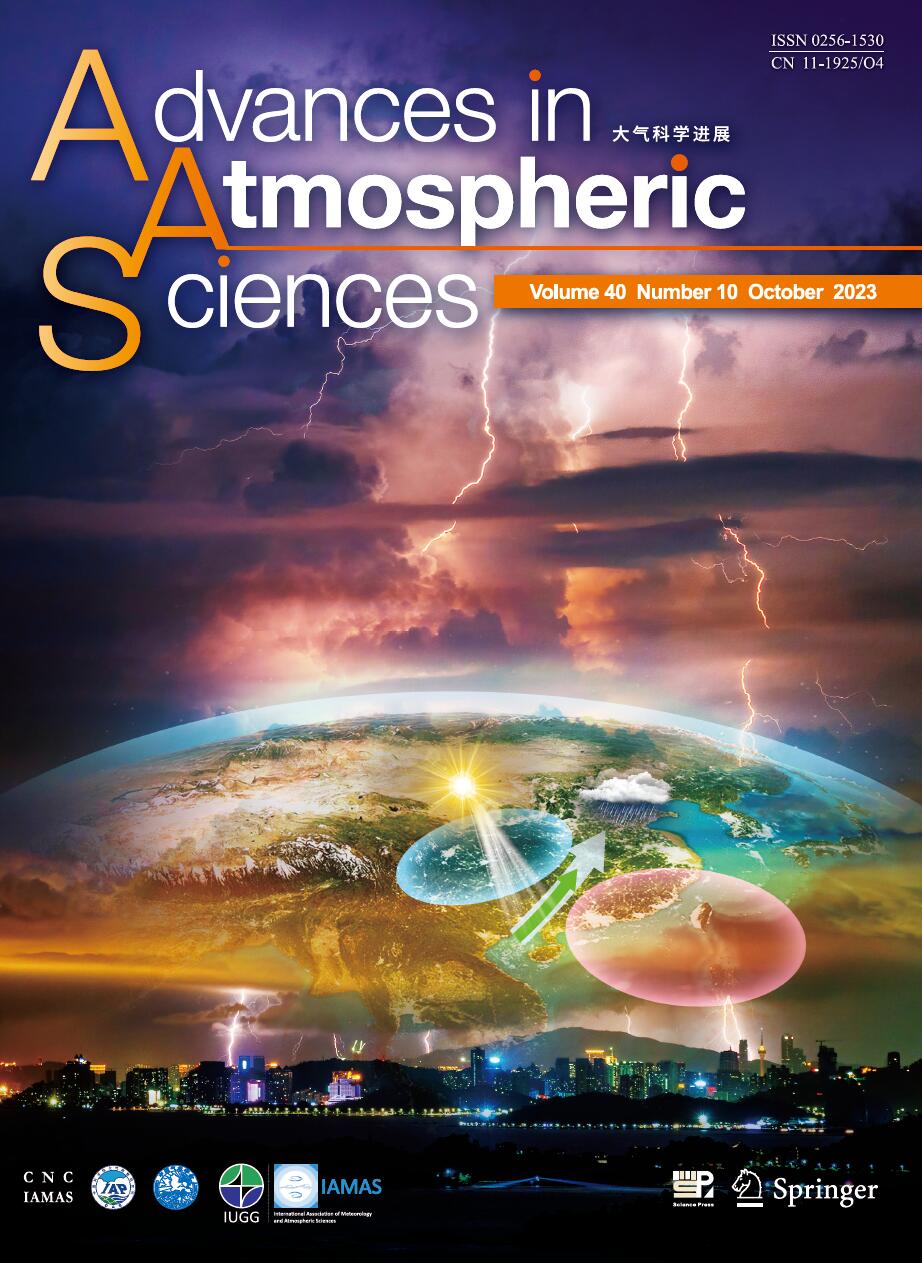| [1] |
YANG Shuai, GAO Shouting, LU Chungu,
2014: A Generalized Frontogenesis Function and Its Application, ADVANCES IN ATMOSPHERIC SCIENCES, 31, 1065-1078.
doi: 10.1007/s00376-014-3228-y
|
| [2] |
ZHOU Lingli, DU Huiliang, ZHAI Guoqing, WANG Donghai,
2013: Numerical Simulation of the Sudden Rainstorm Associated with the Remnants of Typhoon Meranti (2010), ADVANCES IN ATMOSPHERIC SCIENCES, 30, 1353-1372.
doi: 10.1007/s00376-012-2127-3
|
| [3] |
Wu Rongsheng, Fang Juan,
2001: Mechanism of Balanced Flow and Frontogenesis, ADVANCES IN ATMOSPHERIC SCIENCES, 18, 323-334.
doi: 10.1007/BF02919313
|
| [4] |
Majid M. Farahani, Wu Rongsheng,
1998: A Numerical Study of Geostrophic Adjustment and Frontogenesis, ADVANCES IN ATMOSPHERIC SCIENCES, 15, 179-192.
doi: 10.1007/s00376-998-0038-0
|
| [5] |
PENG Jiayi, FANG Juan, WU Rongsheng,
2004: Interaction of Mesoscale Convection and Frontogenesis, ADVANCES IN ATMOSPHERIC SCIENCES, 21, 814-823.
doi: 10.1007/BF02916377
|
| [6] |
Fang Juan, Wu Rongsheng,
1998: Frontogenesis, Evolution and the Time Scale of Front Formation, ADVANCES IN ATMOSPHERIC SCIENCES, 15, 233-246.
doi: 10.1007/s00376-998-0042-4
|
| [7] |
Fang Juan, Wu Rongsheng,
2001: Topographic Effect on Geostrophic Adjustment and Frontogenesis, ADVANCES IN ATMOSPHERIC SCIENCES, 18, 524-538.
doi: 10.1007/s00376-001-0042-0
|
| [8] |
Wang Yunfeng, Wu Rongsheng, Pan Yinong,
2000: Evolution and Frontogenesis of an Imbalanced Flow —the Influence of Vapor Distribution and Orographic Forcing, ADVANCES IN ATMOSPHERIC SCIENCES, 17, 256-274.
doi: 10.1007/s00376-000-0008-7
|
| [9] |
Yang Hongwei, Wang Bin, Ji Zhongzhen,
2002: Application of the Artificial Compression Method to the Simulation of Two-Dimensional Frontogenesis, ADVANCES IN ATMOSPHERIC SCIENCES, 19, 863-869.
doi: 10.1007/s00376-002-0051-7
|
| [10] |
Guojing LI, Dongxiao WANG, Changming DONG, Jiayi PAN, Yeqiang SHU, Zhenqiu ZHANG,
2024: Frontogenesis and Frontolysis of a Cold Filament Driven by the Cross-Filament Wind and Wave Fields Simulated by a Large Eddy Simulation, ADVANCES IN ATMOSPHERIC SCIENCES, 41, 509-528.
doi: 10.1007/s00376-023-3037-2
|
| [11] |
YANG Shuai, GAO Shouting, Chungu LU,
2015: Investigation of the Mei-yu Front Using a New Deformation Frontogenesis Function, ADVANCES IN ATMOSPHERIC SCIENCES, 32, 635-647.
doi: 10.1007/s00376-014-4147-7
|
| [12] |
Zipeng YUAN, Xiaoyong ZHUGE, Yuan WANG,
2020: The Forced Secondary Circulation of the Mei-yu Front, ADVANCES IN ATMOSPHERIC SCIENCES, 37, 766-780.
doi: 10.1007/s00376-020-9177-8
|
| [13] |
Jia Yiqin, Zhao Sixiong,
1994: A Diagnostic Study of Explosive Development of Extratropical Cyclone over East Asia and West Pacific Ocean, ADVANCES IN ATMOSPHERIC SCIENCES, 11, 251-270.
doi: 10.1007/BF02658144
|
| [14] |
Tan Zhemin, Wu Rongsheng,
1994: Helicity Dynamics of Atmospheric Flow, ADVANCES IN ATMOSPHERIC SCIENCES, 11, 175-188.
doi: 10.1007/BF02666544
|
| [15] |
He Jianzhong,
1993: Linear Momentum Approximation and Frontogenesis Caused by Baroclinic Ekman Momentum Flow, ADVANCES IN ATMOSPHERIC SCIENCES, 10, 103-112.
doi: 10.1007/BF02656958
|
| [16] |
Shou Shaowen, Zhu Aimin,
1993: Diagnostic Study of a Winter Snowstorm Event, ADVANCES IN ATMOSPHERIC SCIENCES, 10, 428-434.
doi: 10.1007/BF02656967
|
| [17] |
Liu Qinyu, Qin Zenghao,
1986: DYNAMICS OF NONLINEAR BAROCLINIC EKMAN BOUNDARY LAYER, ADVANCES IN ATMOSPHERIC SCIENCES, 3, 424-431.
doi: 10.1007/BF02657932
|
| [18] |
Xu Yinzi,
1988: THE WIND IN THE BAROCLINIC BOUNDARY LAYER WITH THREE SUBLAYERS INCORPORATING THE WEAK NON-LINEAR EFFECT, ADVANCES IN ATMOSPHERIC SCIENCES, 5, 483-497.
doi: 10.1007/BF02656793
|
| [19] |
Shuang WU, Guiqian TANG, Yinghong WANG, Rong MAI, Dan YAO, Yanyu KANG, Qinglu WANG, Yuesi WANG,
2021: Vertical Evolution of Boundary Layer Volatile Organic Compounds in Summer over the North China Plain and the Differences with Winter, ADVANCES IN ATMOSPHERIC SCIENCES, 38, 1165-1176.
doi: 10.1007/s00376-020-0254-9
|
| [20] |
ZHOU Li, XU Xiangde, DING Guoan, ZHOU Mingyu, CHENG Xinghong,
2005: Diurnal Variations of Air Pollution and Atmospheric Boundary Layer Structure in Beijing During Winter 2000/2001, ADVANCES IN ATMOSPHERIC SCIENCES, 22, 126-132.
doi: 10.1007/BF02930876
|















 AAS Website
AAS Website 
 AAS WeChat
AAS WeChat 
 DownLoad:
DownLoad: